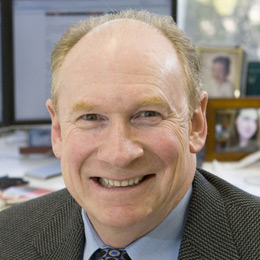California was supposed to be President Biden’s most important partner in advancing his policy agenda. California’s governor, Gavin Newsom, waxed eloquently in a congratulatory letter to Biden about how California was a progressive model for the nation to aspire to, and pledged his full support and assistance.
But less than two months into Biden’s presidency, California’s chronically dysfunctional politics and self-serving teacher unions have thrown a roadblock in the path to reopening schools, one of President Biden’s key goals for his first 100 days.
Biden is right to focus on getting kids back to school. There is nearly universal agreement that school closures have significantly depressed children’s learning, emotional health and social development.
Mental health-related emergency room cases have increased 24 percent for 5- to 11-year-olds and 31 percent for 12- to 17-year-olds since the pandemic began, as children struggle with isolation and impersonal learning. Math test scores have decreased by as much as 10 percent in year-over-year comparisons.
The case for reopening schools is reasonable. Children—even the relatively few who become symptomatic—are unlikely to spread the virus, as kids are responsible for just 4 percent of within-household COVID transmissions.
Last week, Centers for Disease Control and Prevention (CDC) Director Rochelle Walensky stated that schools could safely reopen, even without teacher vaccinations, provided masking, social distancing and proper ventilation were applied.
Gov. Newsom also wants to return kids to their classrooms, but California’s major teacher unions are not cooperating. The unions’ public stance is that they are unwilling to accept the CDC’s recommendation, and are demanding that all teachers be vaccinated before they return to school. Given how California has stumbled in its vaccination performance, which ranks 39th in the country, vaccinating all California teachers might take until the end of the school year in June.
The union position doesn’t broadly align with the views of its rank and file. Many teachers are ready to return to their classrooms, frustrated as much as anyone with the challenges of distance learning, but are reluctant to voice their opinions when their views contrast so sharply with their union. As one teacher remarked, “I’ve been ready to go back for a long time...my position is the Department of Health and health care professionals should be making these calls (to reopen schools) ...not the union.”
Newsom has offered a $2 billion package that would provide additional funding of between $450 to $700 per student for cooperating school districts in order to implement CDC-recommended safeguards. But this is not enough for unions, and reading between the lines of a recent California Teachers Association letter to Newsom, unions want more than reasonable safeguards for teachers.
The state’s largest teacher union’s letter also requests substantial changes in the prioritization of vaccinations. Presently California has prioritized health care workers and those over 75 years old in the top tier of those to be vaccinated, followed by educators and those over 65. But the union demands that parents of school children, irrespective of their age and risk factor, and those living within the households of those working in schools, be vaccinated at the same time as teachers. Managing public health seems to go beyond the scope of a labor union, yes?
There are also union demands for more money, and for lots of other things. Early childhood education. Colleges. Trade schools. Addressing poverty. Racial equity within society. And more funding for public, traditional (non-charter) schools, which the union claims are chronically underfunded. How underfunded are California schools? Adding in spending on teacher pensions, which is deferred compensation, and capitalizing state education bond financing payments, California K-12 spending per-pupil exceeds $20,000 annually. That amounts to over $400,000 per year for a classroom with 20 students.
Newsom is understandably frustrated with the union’s response. But there is little that he can do other than plead, cajole and perhaps sweeten the pot a bit more. Even in the best of circumstances, a Democratic governor playing hardball with California teacher unions could be political suicide, as these unions are among the most powerful lobbyists in the state and are among the biggest political donors to the state’s Democratic Party, with nearly 97 percent of donations going to Democrats.
Moreover, these are far from the best of times for Newsom. California’s 9 percent unemployment rate is higher than that of any other state except Hawaii and Nevada, both of which rely heavily on travel and tourism. The state’s Employment and Development Department, which operates 30-year-old computers with 60-year old software, has paid out $31 billion in fraudulent claims, while over a million legitimate benefits payments have been held up by a system backlog.
Not surprisingly, Newsom’s approval rating, which was 64 percent in September, has plummeted to just 46 percent. And a movement to recall Newsom has picked up steam. To qualify for the fall ballot, nearly 1.5 million valid recall signatures are needed by March. To date, over 1.4 million residents have signed. It hasn’t helped Newsom that some in his party have resorted to calling those signing the recall statement as “white supremacists.” Nor has Newsom helped himself by violating his own social distancing guidelines at one of the state’s most elite restaurants while attending a political fundraiser, or by focusing his energies on executive orders that are remarkably out of touch for most Californians, such as stopping the sale of gasoline-powered vehicles in California by 2035. Unions have the upper hand with Newsom—for now—and they know it.
Sadly, political dysfunction and failed governance have become a way of life in California, meaning that children, families and many teachers continue to suffer as kids are kept out of schools. All parents can do is continue to apply more pressure to reopen and hope that a politically weakened governor and the state’s most powerful labor unions find a reasonable way forward.








